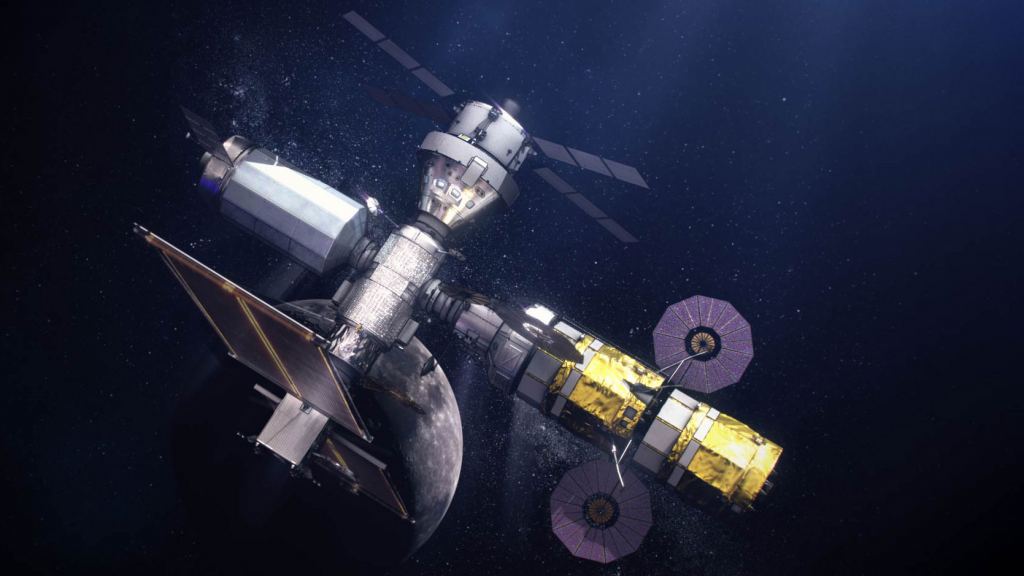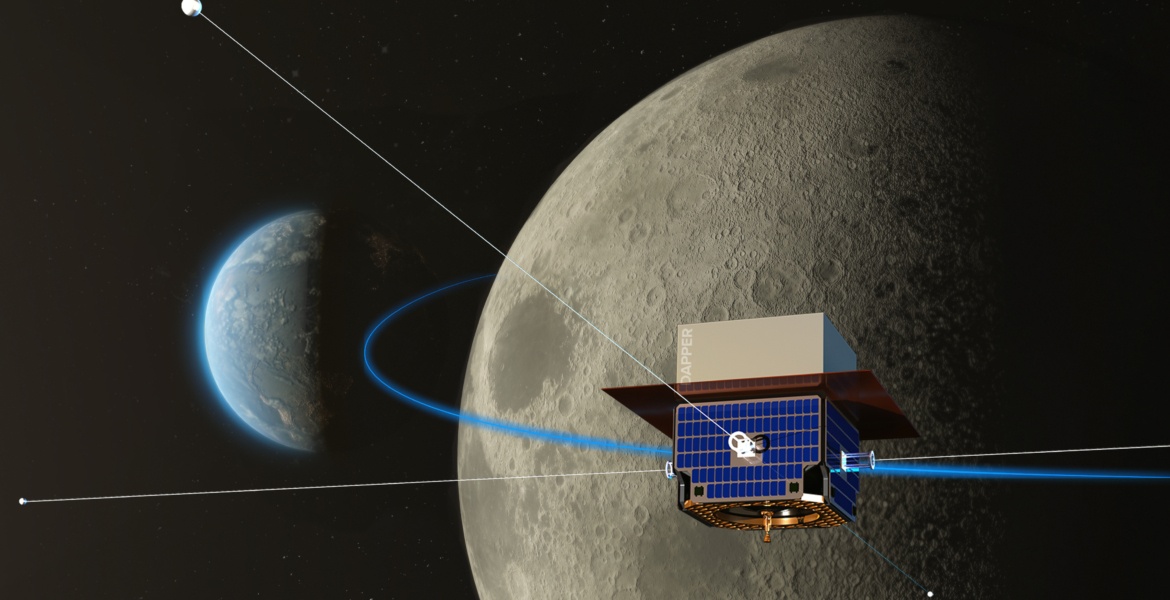The phrase “silence is golden” is even more important for radio astronomers. The sheer amount of radio output created by humans can drown out any interesting signal from the heavens that they might wish to study. Those signals are also partially blocked by Earth’s atmosphere, adding more complexity to the challenge.
The obvious solution to the atmosphere problem is to launch space based observatories, and that has been done in the past. However, in near Earth orbit the radio waves emitted from radio stations all around the world can still blast any radio receiver with an unwanted deluge of signals. So scientists have come up with a novel idea to get the silence they so crave: park a probe on the far side of the moon.
The project, called the Dark Age Polarimetry Pathfinder, or DAPPER, recently gained a new member – the National Radio Astronomy Observatory (NRAO) officially joined the project earlier this month. They will be coordinating with a team of scientists and engineers that specialize in radio astronomy work. NRAO will take over the development of the radio receiver and high-frequency antenna. Both technologies will build off previous versions used in the Wilkinson Microwave Anisotropy Probe (WMAP).
Like WMAP, DAPPER will focus on a very early time period in the universe. The “Dark Ages” of the universe were much darker than the human dark ages of a few hundred years ago. They took place over 13 billion years ago, and were literally dark because there was nothing in the universe that could produce light yet. For the first few million years of the universe, it simply consisted of large clouds of hydrogen gas. Eventually gravity pulled the gas together to create the first stars in what is known as the “cosmic dawn”. But the energy given off by those hydrogen clouds is still bombarding our solar system to this day in the form of radio waves.
Specifically, that energy is transmitted on what is known as the “hydrogen line”, which is a spectral line right around 21 cm wavelength that radio astronomers have been observing for years. The spectral line itself can be red- or blue-shifted depending on whether an object emitting the wave is moving towards or away from the observatory. DAPPER will be able to detect that shift, and help to map the growth of the hydrogen cloud as it evolved through the first few million years of the universe’s existence.
Credit: Academia Youtube Channel
The signal carrying those shifted wavelengths is very faint however. It is not easy for a telescope to pick up the signal in the presence of so much noise coming from other background events as well as general radio static on Earth. The closest place in the solar system where the observatory wouldn’t be constantly bombarded by radio signals from Earth is the far side of the moon. The moon itself effectively blocks radio signals from Earth, providing a quiet environment where the satellite can peacefully observe data. However, transmitting that data back to Earth can prove a bit tricky, as the moon would also block any data transmissions sent directly from the satellite to Earth.
Therefore, DAPPER has been named as one of NASA’s Artemis missions, which just requested a budget of $28 billion to get astronauts back on the moon within the decade. It could possibly use the Lunar Gateway, which is a planned space station that is part of the Artemis program, as a communication relay. The DAPPER mission will also benefit from the increased interest in lunar missions that comes with being attached to NASA’s flagship program.

Credit: NASA
There’s a downside to that increased interest though. As the lunar infrastructure that is such a key part of Artemis is built up, DAPPER will become more and more surrounded by sources of radio transmissions. But for its mission lifetime, it should be able to bask in radio silence on the far side of the moon.
Learn More:
NRAO – NRAO Joins Space Mission To The Far Side Of The Moon
Space.com – Under a DAPPER Moon
NASA – DAPPER
Feature Image Credit: NRAO / AUI / NSF, Sophia Dagnello

